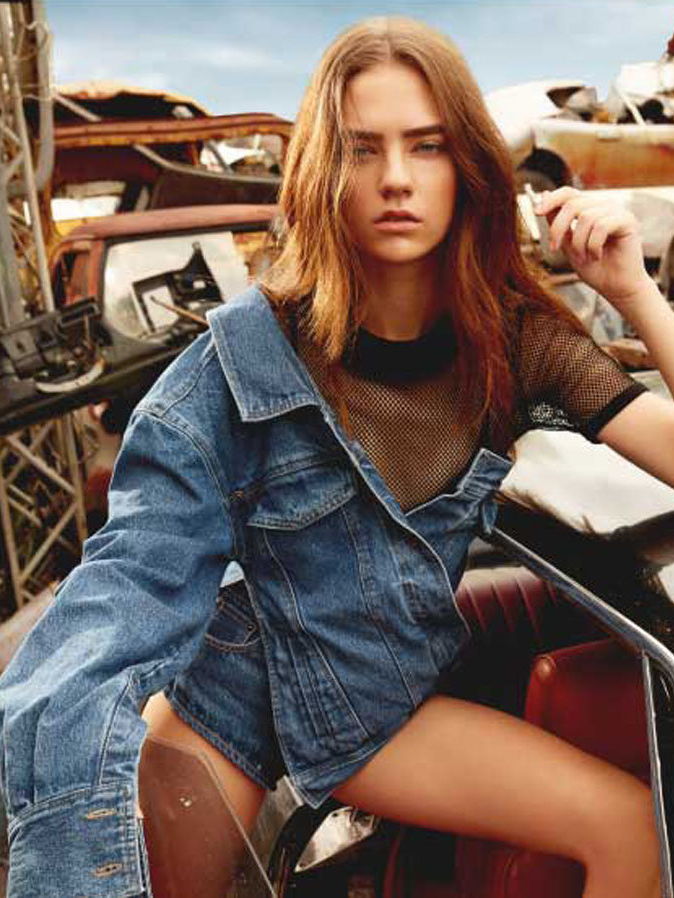Last week, I asked you, my four or five loyal readers, to tell me what you wanted to know. In addition to those of you who wrote to express your doubt that there’s actually more than one queer woman working in comics or your disappointment that I do not, in fact, look just like my forum avatar, several people asked what, exactly, a comics editor does.
I know for a fact that the answer to the first question is ‘Yeah, there is,’ and the discrepancy between myself and my avatar should be pretty obvious, in that my avatar is ‘Girl’ of Cat and Girl (one of my favorite webcomics), and I have a nose (Ha! Take that, Roald Dahl!).
As for the third question, I’ll do my best to answer it here. I would guess that the details of this stuff vary from editor to editor and publisher to publisher, so please don’t make major career decisions based on the information below. I’m going to go into some of these in more detail in weeks to come, but for now, here’s an overview of what comics editors do while the rest of you are earning your money the old-fashioned way:
Editors choose projects.
They don’t choose projects unilaterally, and they don’t choose all of the projects they work on, but editors have a lot of say in what projects publishers pick up. As a rule, the more experience and seniority an editor has, the more influence she will have on whether a book makes it to press.
Editors choose creators.
On ongoing series, editors are often responsible for selecting, soliciting, and hiring the creative team. Again, they rarely act unilaterally here; often, licensors or series creators will have approval rights. But it’s generally up to the editor to assemble a comic’s creative team, and even when licensors and series creators have input, the editors are often the ones who make the final decisions.
Editors maintain continuity.
This is probably a bigger deal at publishers with shared universes, but it’s up to editors to be intimately familiar with the world and continuity of their comics and to make sure that those remain consistent from issue to issue and story to story. Sometimes, this is as prosaic as double-checking dates; sometimes, it’s as abstract as requesting a script rewrite because a character is presented in a way that the editor believes conflicts with a previous portrayal of the character. For licensed comics and comics based on other media, the editors also need to be conversant with the original material.
Editors are also responsible for making sure that creators have all of the visual and factual reference material they need, from backissues of a given series, to photo references, to factual material.
Editors organize and coordinate.
Editors connect and balance creative and practical concerns. They coordinate creation, marketing, production, and design; they’re responsible for generating and maintaining the creative budgets and creative and publication schedules. They track and maintain licensor approvals, supervise creator contracts, and make sure that vouchers are submitted and paid. They create and maintain comp lists, write work orders and indicia, and request reference material. On books with more than one creator, editors are responsible for coordinating and maintaining communication with the creative team.
Editors listen.
It’s the responsibility of an editor to pay close attention to media and fan responses to the comics she edits and to track sales. She gauges public reaction, which in turn influences her editorial decisions. Depending on the publisher for which she works, she may also interact more directly with her audience, via both private correspondence and public forums such as letter columns and online communities.
Editors write.
Most editors have some creative experience, and those who don’t when they begin to edit will likely accumulate creative credits before their careers end. If an editor can’t find a writer for a series, he will often step in and provide fill-in issues or even ongoing scripts himself. Even when they’re not credited as writers, editors can have tremendous impact on story decisions. On a more pragmatic front, they also write credits, indicia, ‘story so far’ blurbs, and solicitation copy.
And finally, editors edit.
When material comes in, from pitches, to scripts, to artwork, the editor is the first one who sees it. She is responsible for evaluating and responding to material: requesting revisions, making corrections, and communicating constantly with creators. Editors fix grammar and tweak syntax; they make sure that the artwork and the script mesh, and that the dialogue fits in each panel. The editor’s desk is often the first point of intersection between word and image.
A bonus fact about editors:
Editors are fans.
The comics industry is not a glamorous place to work. The hours are long, they pay is notoriously low, and outside of the comics community, we don’t have much standing or prestige. Many of the people I work with have advanced degrees; many are skilled writers and artists in their own rights. We work in comics because we love comics; because we know how lucky we are to be part of the process of creating them. Even the most knuckleheaded editorial decisions are usually made with genuinely good intentions.
Of course, that’s no reason not to take us to task when we screw up. We may be fans ourselves, but we know we have to answer to the rest of you, too.
Speaking of taking editors to task, please keep the questions and feedback coming. I’m still finding my footing here, and hearing what you’d like to get out of thiswhat questions you have, what you’d like me to address, and what you think of what you’ve seen so faris a huge help!
February 19th, 2007
Categories: Editing, Questions . Author: Rachel Edidin


